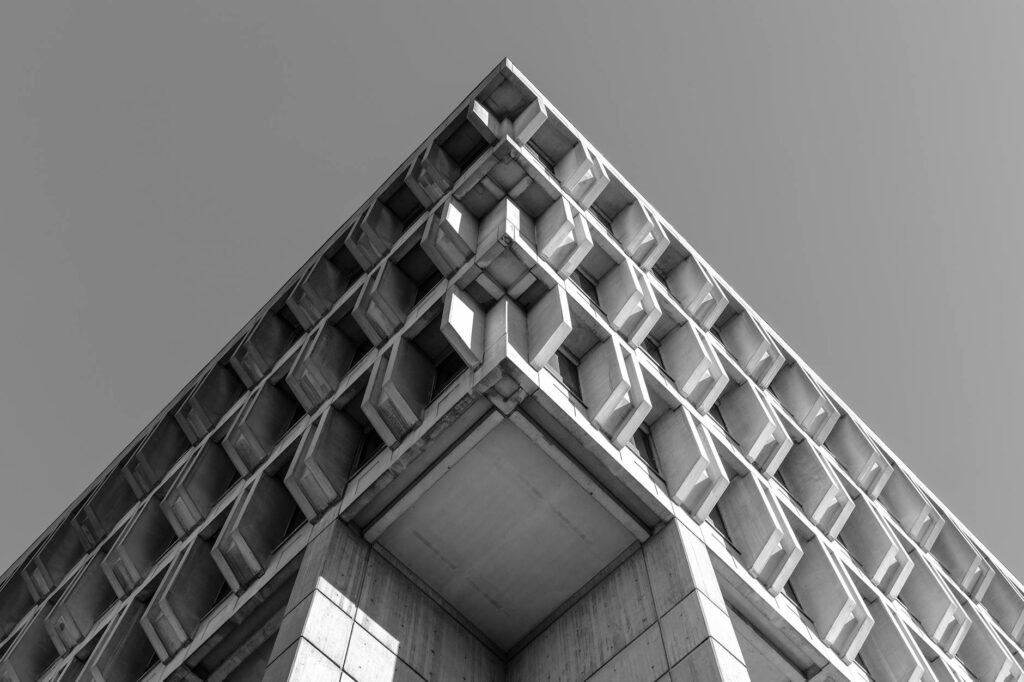Brutalism, a controversial yet captivating architectural movement, continues to fascinate and inspire debate. Its raw, imposing structures are as divisive as they are striking, prompting both admiration and criticism.
Origins and Influences
Emerging in the post-war era, Brutalism drew inspiration from Le Corbusier’s ideas of functionalism and the use of raw, exposed concrete. The name itself, derived from the French term ‘béton brut’ (raw concrete), perfectly encapsulates the movement’s aesthetic. Early examples often showcased a bold, monumental scale, reflecting a sense of optimism and social progress prevalent at the time. 
Key Characteristics
Brutalism is characterized by its massive, imposing forms; the use of exposed concrete, often left unfinished or with minimal ornamentation; repetitive modular elements; and a focus on functionality over aesthetics. The texture of the concrete itself, with its imperfections and variations in color, is a defining feature of the style. [IMAGE_2_HERE]
Notable Examples
Iconic Brutalist structures are found worldwide. From the Barbican Estate in London (learn more) to the Geisel Library at the University of California, San Diego, these buildings stand as powerful testaments to the movement’s vision. Many examples also exist in Eastern Europe, demonstrating the style’s global influence. [IMAGE_3_HERE]
The Brutalist Legacy
The legacy of Brutalism is complex and multifaceted. While some buildings have fallen into disrepair, others have been repurposed or restored, gaining a new appreciation for their inherent qualities. The raw honesty and uncompromising scale of Brutalist structures continue to resonate with architects and urban planners today.
Criticisms and Controversies
The movement has faced considerable criticism, often accused of being cold, impersonal, and imposing on the urban landscape. This criticism is partly linked to the association of some Brutalist structures with social housing projects that experienced difficulties. However, many argue that these criticisms overlook the architectural merit and innovative aspects of the style. Further Reading
Modern Interpretations
While the heyday of Brutalism was in the mid-20th century, its influence can still be seen in contemporary architecture. Some architects are revisiting the movement’s principles, adapting them to modern contexts and technologies. The raw materiality and focus on functionality remain attractive aspects for some, leading to reinterpretations and reinterpretations.
Brutalism’s Enduring Appeal
Despite its controversies, Brutalism holds a unique place in architectural history. Its raw aesthetic, imposing forms, and emphasis on functionality continue to inspire awe and debate. The movement’s legacy extends beyond individual structures; it speaks to larger social and political themes of the era in which it flourished. [IMAGE_4_HERE]
Preservation and Future
The preservation of Brutalist buildings is a growing concern, with many structures facing demolition. However, a growing appreciation for the architectural significance of Brutalist structures is leading to preservation efforts and adaptive reuse projects. The ongoing debate about the future of Brutalism reflects the ongoing evolution of architectural tastes and societal values. Explore preservation efforts
Frequently Asked Questions
What defines Brutalist architecture? Brutalism is characterized by the use of raw concrete, massive forms, repetitive modular elements, and a focus on functionality over ornamentation.
Is Brutalism still relevant today? While its heyday was in the mid-20th century, Brutalism’s principles are revisited and reinterpreted by contemporary architects, demonstrating ongoing relevance.
Why is Brutalism so controversial? Some criticize Brutalism’s cold aesthetic and imposing scale, associating it with impersonal urban planning. Others appreciate its raw honesty and bold expression.
Are there any famous examples of Brutalist architecture? Yes, many examples exist globally including the Barbican Estate in London and the Geisel Library at UC San Diego.
What is the future of Brutalist architecture? There is a growing effort to preserve existing Brutalist structures and integrate its key elements into contemporary projects.

